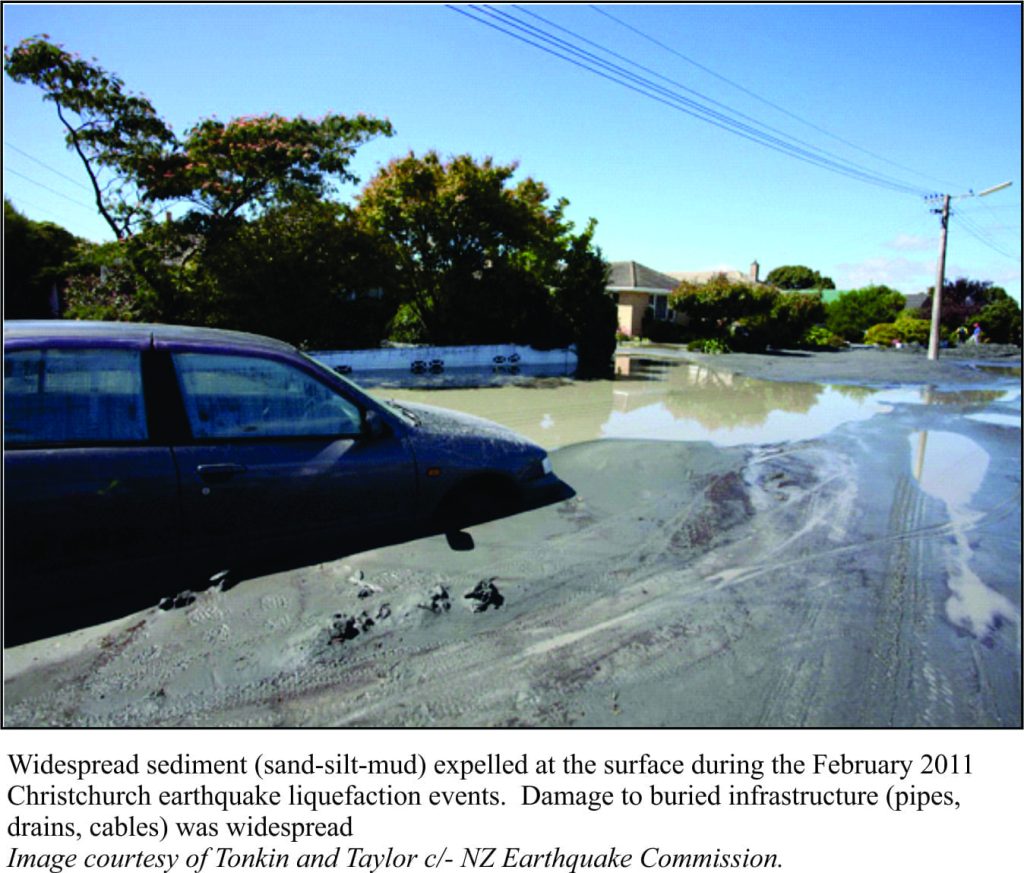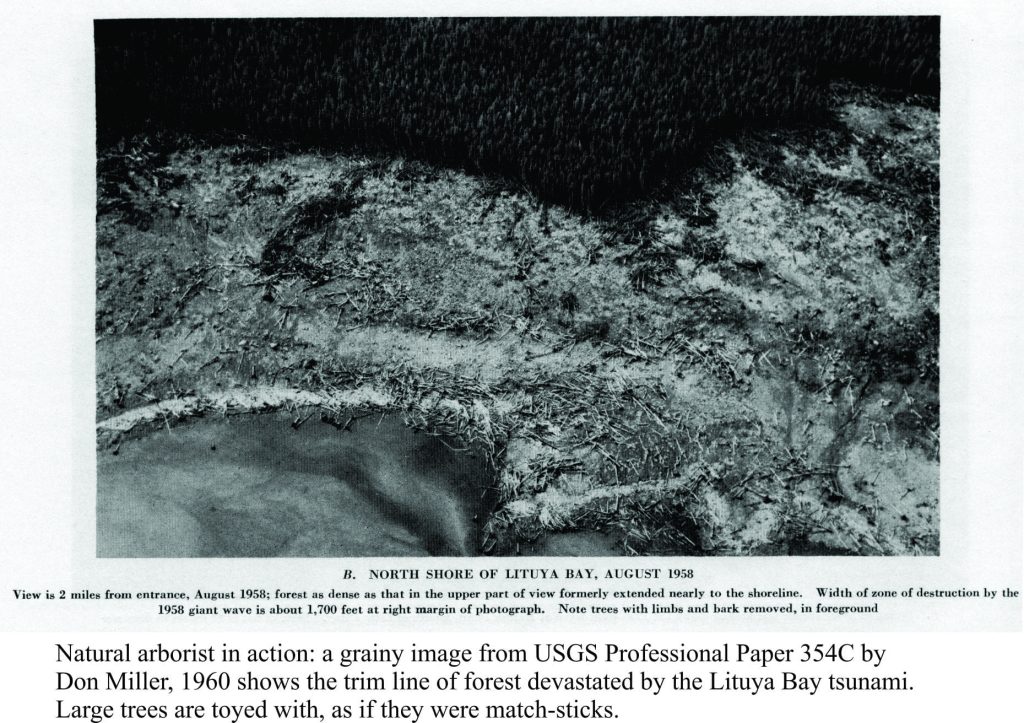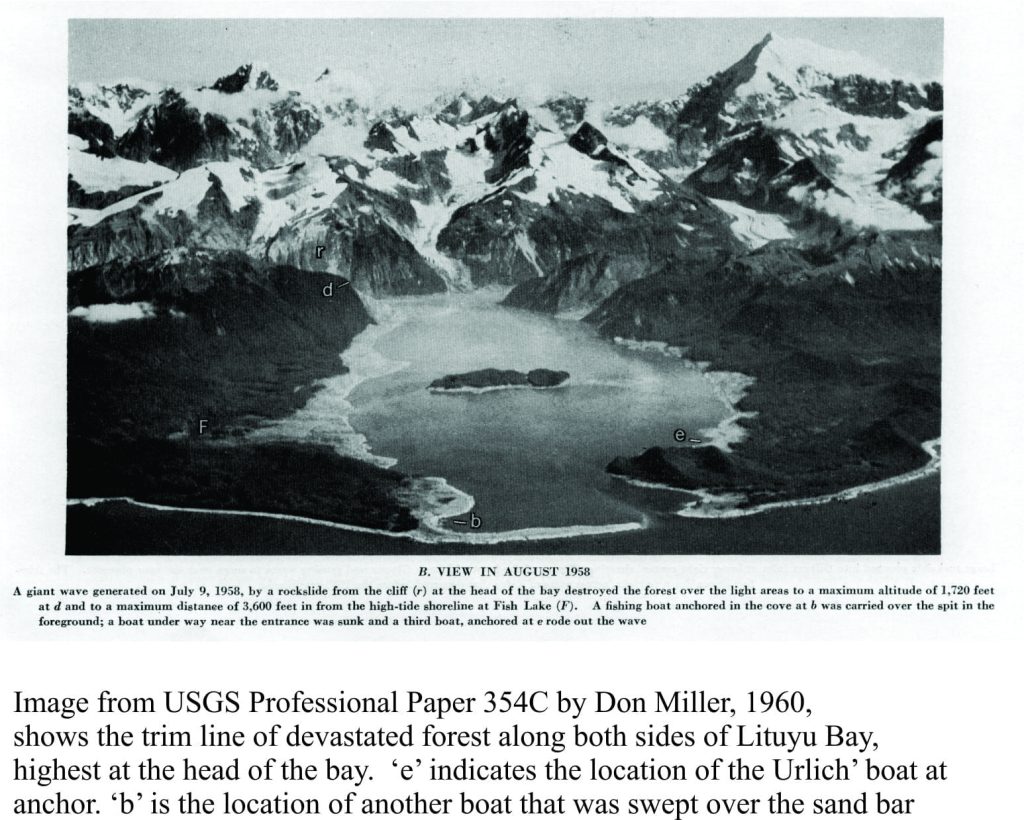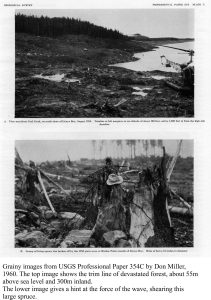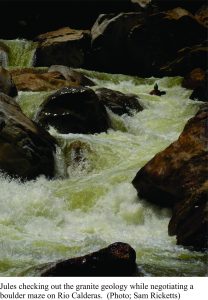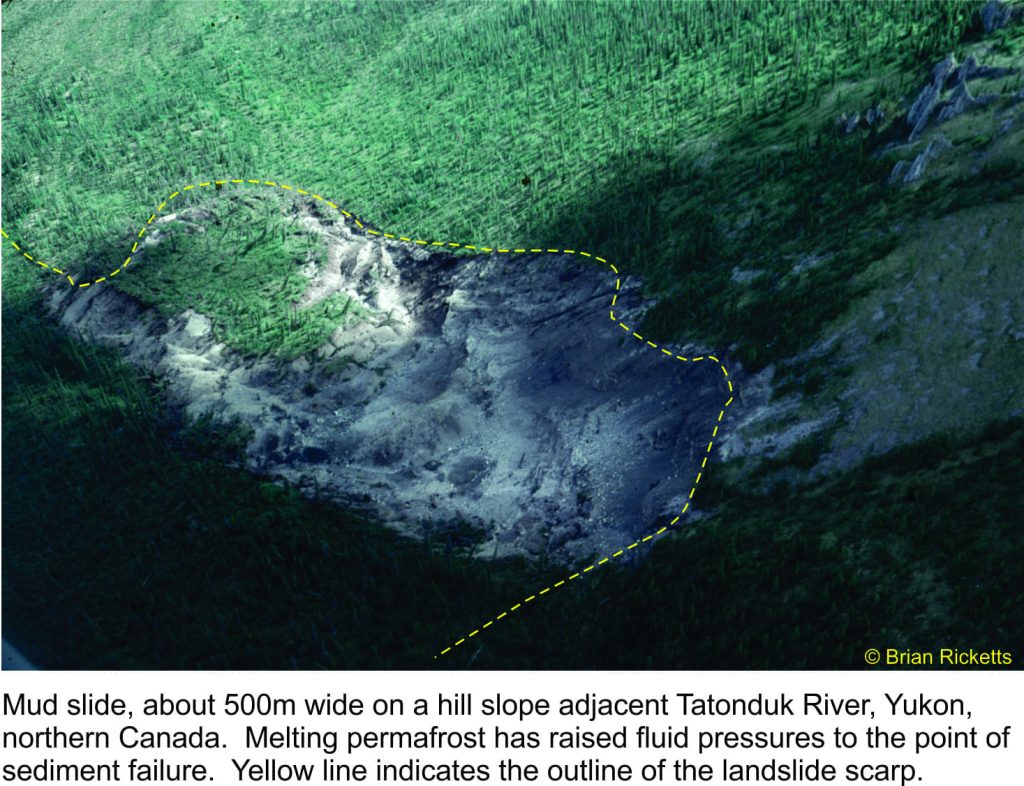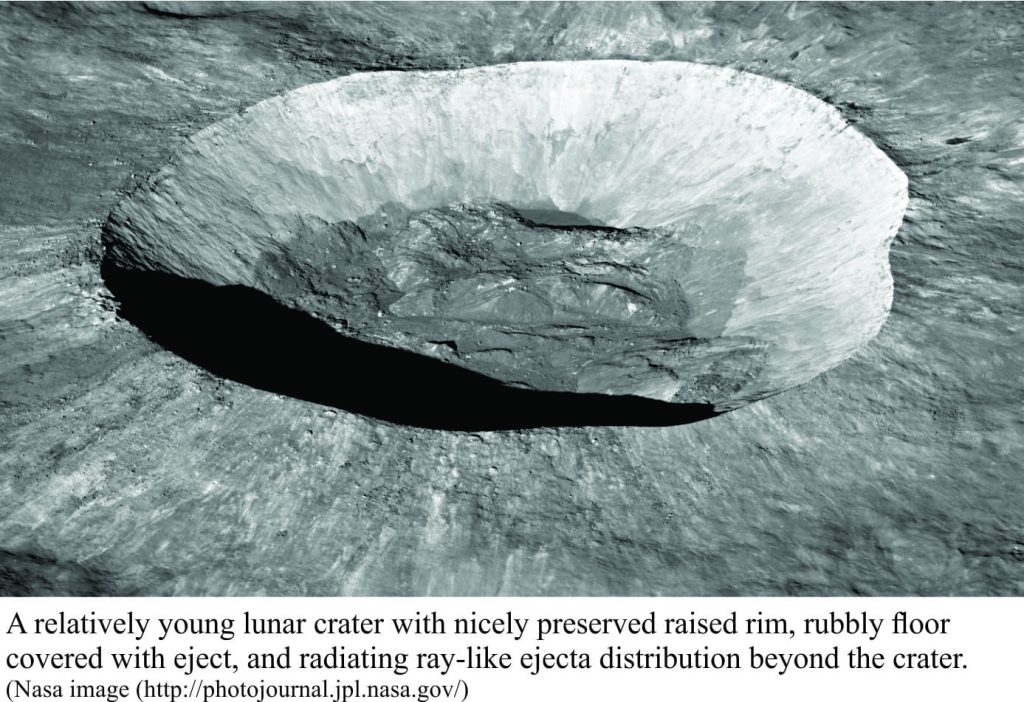Most of us at some time have gleefully created our own liquefied puddle by stomping on wet beach sand. I once showed my kids, intent on explaining the scientific intricacies of liquefaction, but being teenagers at the time they walked off in embarrassment. But liquefaction is much more than a trick at the beach; it is a process that can have devastating consequences for built structures and natural slope stability. Continue reading
Category Archives: Kid’s stuff
When nature casually flicks a finger at us
I always feel a sense of unease when hearing of natural disasters. I live in a country where earthquakes, volcanic eruptions, landslides, floods and the threat of tsunamis all occur within a relatively small land area. In Canada, I lived on a small island (a daily ferry commute), nestled in a typical West coast fiord near Vancouver and more than once I pondered the possibility, even inevitability of those towering rock walls suddenly obeying the laws of gravity.
Fiords exist because of ponderous gouging and plucking of the solid earth by rivers of ice; testaments to ancient glacial climates and the forces of nature. Fiord landscapes are stunning, beautiful in and of themselves and, I suspect because they invoke a sense of awe. But this is a façade. Rock walls, almost vertical in places and towering 100s if not 1000s of metres are inherently unstable; any glaciers at the head of the fiord or hanging off the valley walls exacerbate the problems. Landslides, rockfalls and glacier calving inevitably end up in the sea and the resulting tsunamis can be terrifying. The video here shows these guys had a lucky escape after venturing a bit too close to a calving, Greenland glacier.
All that energy focused through a narrow gap
Terrestrial or submarine landslides that occur on open coasts can produce locally massive tsunami waves (10s of metres high) but these tend to dissipate radially. There are well known examples on oceanic volcanoes like Canary Islands and Hawaii. From the North Sea, the Storegga submarine landslide about 8000 years ago must have devastated parts of Britain and northern Europe coasts with wave run-up locally 20m and more. The Youtube Video here shows a recreation of this event.
Tsunamis generated in fiords react differently because the wave energy is focused, generally along the length of the fiord. Some of the largest waves on record, either observed directly or the immediate aftermath, have been generated in fiords. There are many examples – historical and prehistoric. The three I have chosen are well documented and pretty spectacular. They provide a sober reminder of what can happen when nature casually flicks a finger at us.
Talfjord, Norway, 1934
On April 7, about 2 million cubic metres of rock fell about 700m into the fiord. Displacement of water instantly created a wave that initially was 62m high near the landslide impact. By the time the wave had reached the village of Talfjord some 5 km away it was still 16m. It was about 3am and most in the town were asleep. Geological mapping has shown that there have been at least 10 landslides along a 7km stretch of the fiord, and along the adjacent Storfjorden 108 rockslides have been identified, all occurring since deglaciation about 14,500 years ago (Source: Harbitz et al. 2014, Coastal Engineering, v 88). It was common knowledge at the time that the rock mass above the fiord was unstable, where tension cracks were forming. Unfortunately, there are no real geotechnical solutions to a problem like this, other than monitoring.
A similarly unstable, but much larger rock mass in Storfjorden (about 50 million m3) has been monitored for several years. Signs of instability include tension gashes that seem to become larger every year. Early warning systems are in place although the warning time for the closest villages is likely to be no more than a few minutes. Fingers are crossed.
Paatuut, Greenland, November 21, 2000
A large landslide at Paatuut located in a fiord on Greenland’s west coast, moved about 90 million m3 of rocky debris about a third of which splashed into the fiord. The landslide was initiated 1000-1400m above sea level. No one witnessed the landslide but the resulting tsunami was recorded in a small village about 40km away. On the side of the fiord opposite Paatuut an abandoned mining town (Qullissat) about 25km away was almost destroyed. Wave run-up at Qullissat was 28m (observed in the lines of debris) and it is estimated that the wave near the landslide itself had a run-up of about 50m. Seven kilometres northwest of Paatuut several icebergs were left stranded up to 700m from the coast on an alluvial fan. Fishing crates and other flotsam were stranded to 800m inland and 40m above sea level.
Lituya Bay, Alaska, July 9, 1958
One of the largest waves ever observed (and survived) took place in Lituya Bay, Alaska during a 1958 magnitude 7.8 earthquake along the Fairweather Fault (Fairweather Fault is part of an extensive system of active faults that mark the boundary between the Pacific and North American plates – it is a fundamental structure in the Alaskan Panhandle.).
The tsunami was triggered by a 30 million m3 rock mass falling more than 900m into Gilbert Inlet at the head of Lituya Bay. It seems likely that collapse of the glacier front at the head of the Bay also played a role in generating massive waves. The wave nearest the landslide had an incredible 524m run-up (1720 feet), but subsided to about 10m near the entrance to the open sea. Wave run-up was easily mapped along Lituya Bay by the line of devastated forest; also known as trim lines.
Howard Urlich and his 7 year-old son, from their fishing boat anchored in a sheltered bay, provided first-hand accounts of what must have been a terrifying experience. They awoke to a wall of water, that from their estimates was 50-75 feet high (15-22m) coming at them. The boat was anchored in about 10m of water. Unable to release the anchor Urlich let the anchor chain run free – it snapped at about 40 fathoms (73m – note however that the boat would have been carried forward at this point in their adventure and the 73m does not indicate true wave height; but it does give some indication). The boat was carried along the front of the wave over the adjacent shore and several metres above the trees. It was then washed back into the bay, still upright. A couple of other boats in the bay didn’t fare so well. The Youtube video shows a dramatic reconstruction of events.
Read the first USGS account by Don Miller, 1960 here, and some old images here.
The list of terrifyingly spectacular fiord tsunamis goes on. For example, a more recent event at Taan Fiord Alaska, October 17, 2015 – as if Lituya Bay wasn’t enough; this one is still under investigation, but it looks like the wave was capable of hedge-trimming activities to about 150m and tossing boulders even higher.
Postscript
The day I wrote this post ended with a magnitude 7.5 jolt in northeast South Island, New Zealand (north of Christchurch). We live about 800 km north of the Kaikoura epicentre and our house shook and swayed, trees swayed, and water in the pool sloshed over the sides. No damage to us, but considerable building and infrastructure damage farther south. Some aftershocks have been greater than magnitude 6. A rude awakening…
Submarine landslides; danger lurks in the ocean deep
Source: Newfoundland and Labrador Heritage Website. You can watch this short video on Youtube
Five pm, November 18 1929 in the sleepy fishing village on Burin Peninsula, Newfoundland (at that time Newfoundland and Labrador were a Dominion of Britain. They did not become part of the Canadian Federation until 1949). Most people felt the tremors from the Grand Banks 7.2M earthquake, centered about 260km south of Burin but apparently went about their business as usual. About 7.30 the same evening, there was a sudden drop in sea level, exposing the local shore and stranding boats. The follow-up was totally unexpected – three massive waves inundated coastal dwellings, killing 28 people and leaving hundreds homeless. The waves were 3-7m high in most places, but along some narrow inlets the tsunami energy had focussed into 27m-high monsters. The tsunami was caused not by the earthquake itself, but by a massive submarine landslide. (Check out some images here). Continue reading
Paddling Colombia; ancient rivers over granite
Landslide! How groundwater affects the stability of slopes
Groundwater contamination; messing around with aquifers


Unfortunately, because of foolishness, greed, and ignorance, we have managed to contaminate many important aquifers
The incident (September, 2016) involving wastewater ingress via a sinkhole to the Floridan Aquifer in Polk County, Florida is yet another reminder of the susceptibility of groundwater to contamination. Other recent events like the 2016 Samarco tailings dam failure in Brazil (caused by loading of weak, groundwater-saturated materials), the 2010 Kolantar red mud dam failure in Hungary (mostly caustic, iron oxide, aluminium oxide, but worrying levels of chromium, lead and mercury), and Imperial Minerals 2014 Mount Polley dam failure tailings dam failure, all had immediate and devastating effects on surface water. In the longer term it is likely that downstream shallow aquifers have also been compromised. Continue reading
Class 5; Surf rolls and cartwheels; Surf kayaking at Raglan, New Zealand
Sam had the day off so the two of us headed to Raglan and Ngarunui Beach, a typical wild, west coast North Island beach that includes a world class left-hand surf break at Manu Bay. Continue reading
Throwing the Celestial Dice
The expression global extinction frequently conjures images of all life being snuffed out by an act of celestial hubris. Asteroids, bolides or comets can be lobbed our way at whim. Earth, in its first billion years or so was probably hammered by extra-terrestrial bits of rock and ice. The cratered surface of our moon attests to this. Some argue that it was these early collisions that provided at least some of our water and possibly even the organic compounds that eventually gave rise to life itself. Continue reading
Astronomy, Cycles and Climate Change
Cycle: ( noun) A series of events that are regularly repeated in the same order (Oxford Dictionary)
How Milankovitch cycles effect Earth’s climate
Natural cycles are all around us; tides, seasons, sun spots, birthdays, El Niño. In geology we can identify cycles at many different scales, from the really grand to the wafer-thin (deference to Monty Python), from those that span eons, to cycles that repeat every few seconds. Perhaps the grandest of earth cycles are those that last 100-300 million years and involve the formation and destruction of tectonic plates. On a more human time scale there is the seemingly never-ending train of waves rushing to meet you on your favourite beach. Continue reading
Dali Wasn’t Nuts; the Creativity of Science
Art can be thought of as (among other things) the construction of sensory (conscious and subconscious) images; images conveyed by the artist or construed by the audience. Science on the other hand is often thought of as the construction of hypotheses and theories, of grand ideas. In the vocabulary of science, words and phrases like logical analysis and objectivity are deemed central to the whole process of doing science and frequently are used to set it apart from other human endeavors, like art, at least in the minds of those who like such distinctions. But images are also central to science. We create them whenever we talk of evolutionary lineages, of Schrodinger’s Cat, double helixes, nano-particles and atomic tunnels. In my own discipline, whenever I think of James Hutton’s (1785) discovery of deep time (geological), I don’t think of him engrossed in syllogisms, but in some intriguing mix of reason and creative wondering at the world he observed. The syllogisms probably came later. There is creative thinking in science; it is the same creativity that emboldens the painter and poet to explore the internal and external universe they see. Creativity is not just a useful add-on to the progression of science, its so-called method; it is a vital part of discovery and invention. Without it science would be little more than a collection of data. These ideas are not new; many scientists have espoused them. But they are worth reiterating. Continue reading

